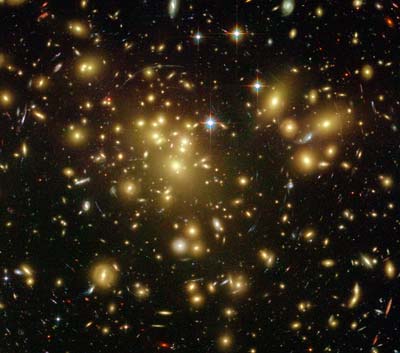dalethorn wrote:A few seconds in and it looks like the universe is turning almost clockwise like a tropical storm. But the big bang should have propelled everything outward. Something isn't right.
The Big Bang DID propel everything outward... but that "EVERYTHING" was ENERGY, it was NOT stars and galaxies,... soon it was cooling... expansion is a cooling process, Condensation is a result... collisions with minute particles produced dust, and hydrogen was also created... it condensed further with cooling... thus, after the big bang, while still propelled outward by momentum... things started to solidify, and FALL inward toward each other. The expansion reached vast distances in incredibly fast speed... "a blink of the eye" relatively speaking... like filling a football field with a gas, nearly instantaneously... then cooling as expansion is a cooling process.... it was probably cooling the split second after expanding from a singularity.... I personally think the tremendous heat helped FUEL the expansion. Trillions of Degrees of hot energy is DYNAMIC... not static...
As for the turning... Everything in the Universe spins... meteors tumble, asteroids, planets, stars, clusters, galaxies, so, why not the Universe? IT is after-all... a Synergistic Whole, of Energy... that got started at the same time. Plus, as things FALL, and as things cool... they start to orbit with their movement and momentum, and play off each other... Even The Earth and Moon. Earth transfers energy to the Moon, which recedes from us... but the Earth slows slightly... Earth used to spin faster, and have shorter days... Conservation of angular momentum...Transference and Conversion of Energy... so, smaller and smaller spins... When the Energy came out of the Singularity it was a fantastically hot Energy, it probably "swirled" out... not just in a straight line. And of course in a sphere... thus, as it expands, it has a tendency to "blob" up...as it gets thinned out... like an exploding ball of paint... (see Mythbusters)....
OF COURSE... the film makers themselves... could be TURNING THE CAMERA... for Aesthetics....ART.... which would invalidate my statement above...

... but not so much....
:---[===] *
 Galaxy Evolution Tracking Animation
Galaxy Evolution Tracking Animation